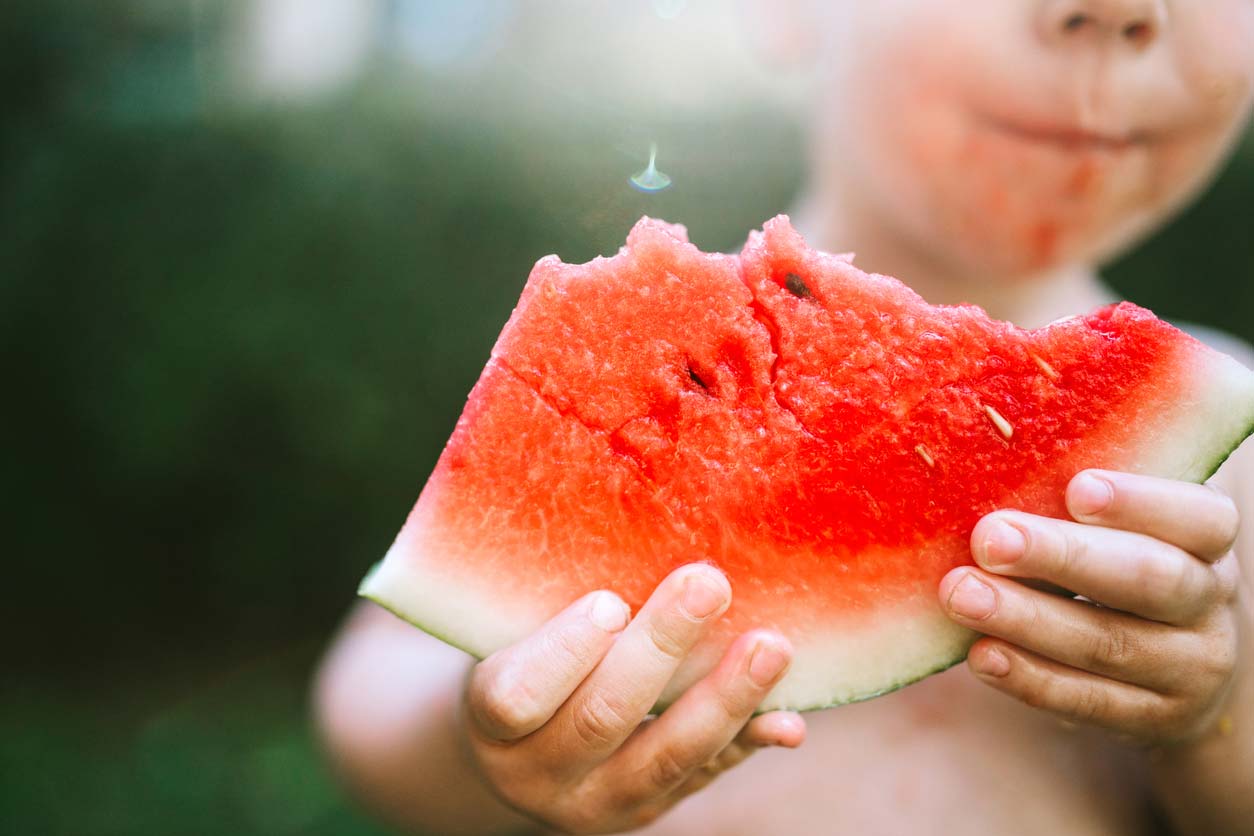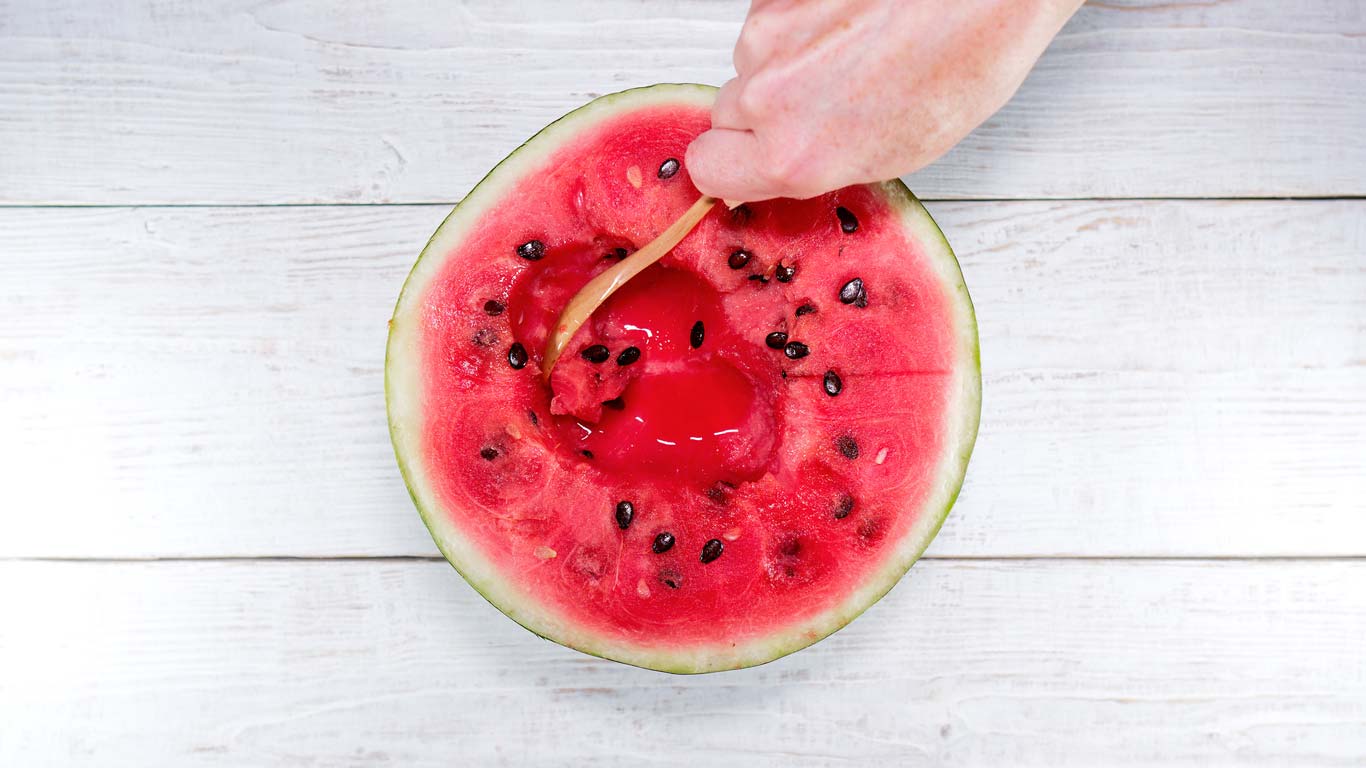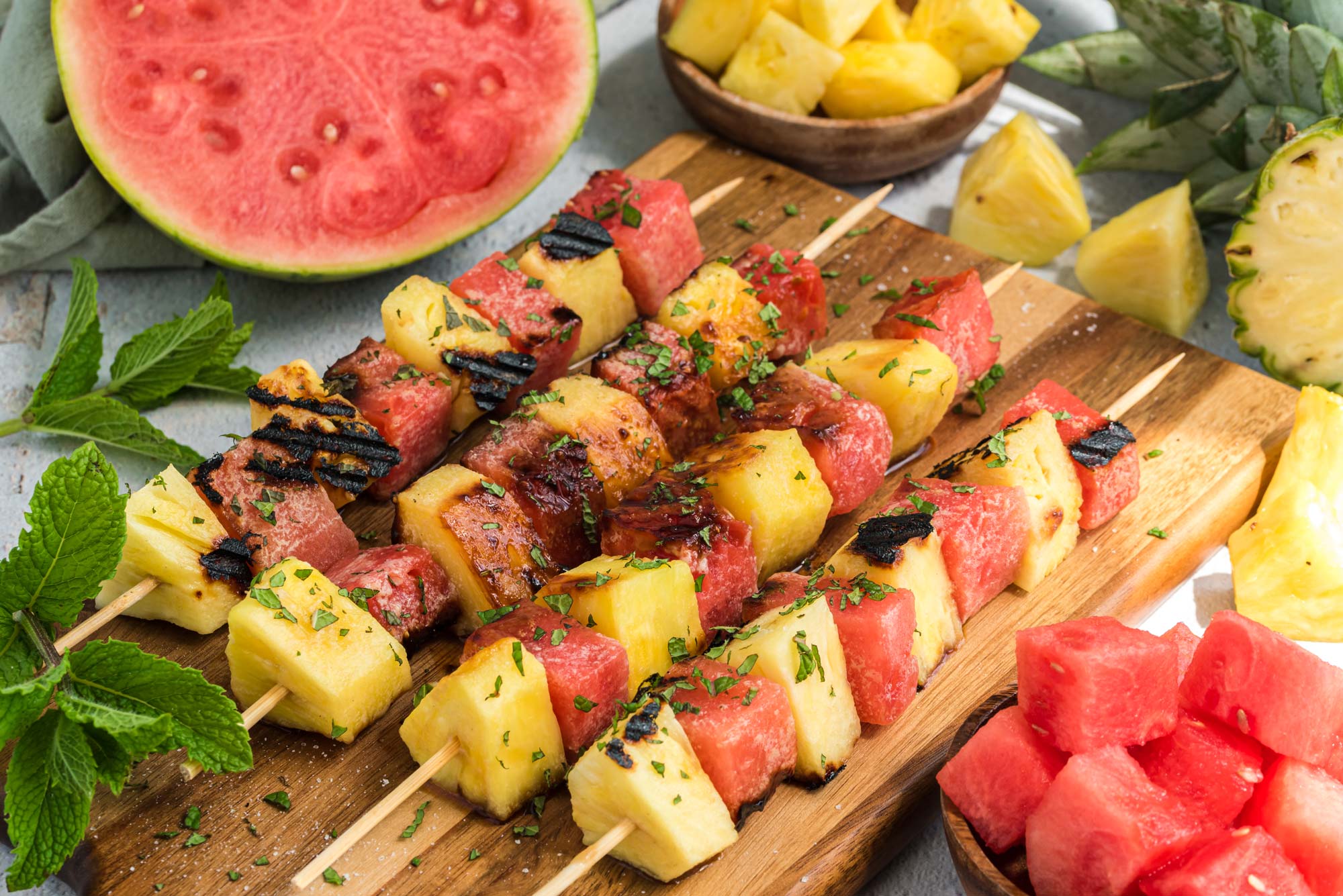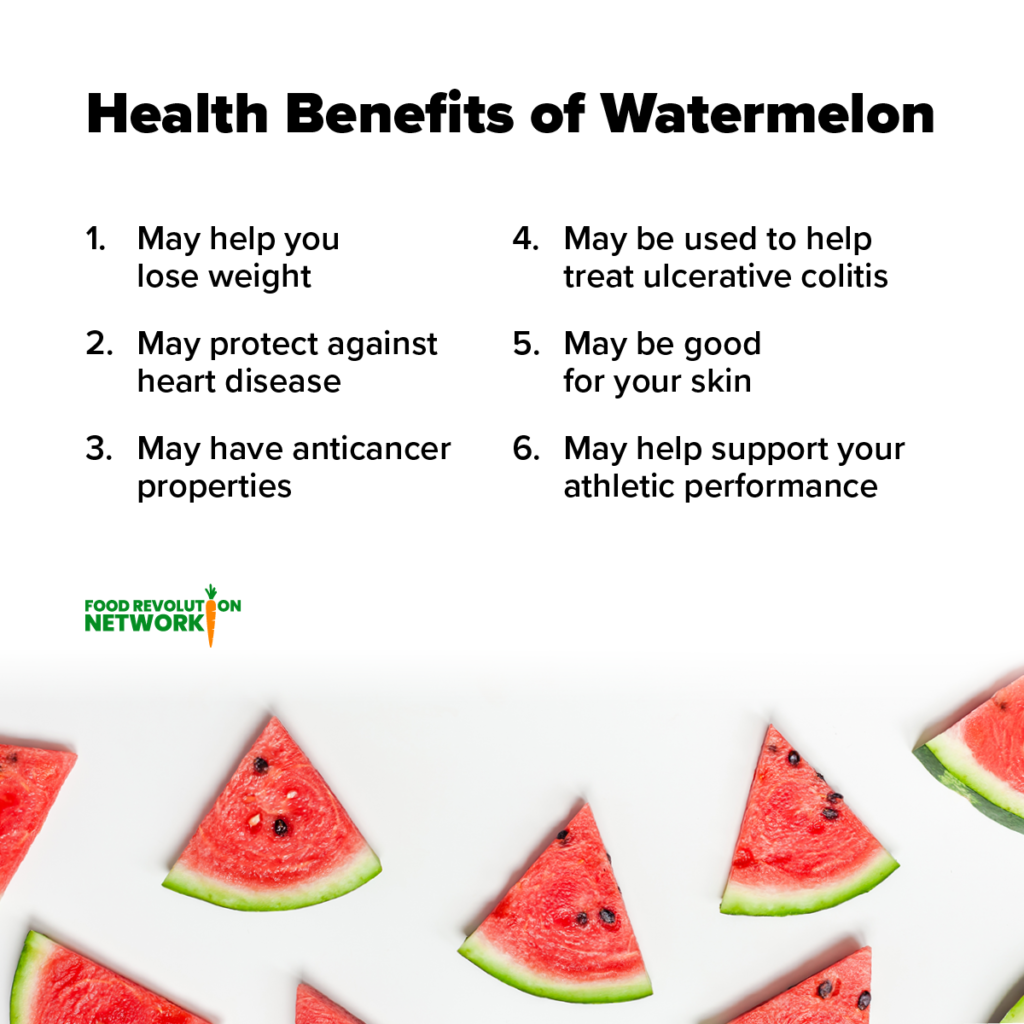I’m gonna brag a little: the Food Revolution Network YouTube channel has some popular videos with tens of thousands of views. They feature deep conversations with thoughtful people, healthy recipes, and valuable and actionable advice on how to live a sustainable, delicious, and ethical life.
Let’s contrast that with the videos that appear when you search YouTube for “drop a watermelon.” The top listing, “DROPPING WATERMELON 45FT!!” has been viewed nearly 17 million times, and the channel that produced it has eight million subscribers. Just below it, you can join 10 million viewers in watching the same creator drop a watermelon that was first frozen with liquid nitrogen. And under that, an Australian channel with six million subscribers shows what happens when you spray a watermelon with Line-X protective coating, and then drop it 150 feet.
Clearly, the gravity-induced destruction of watermelons is a very important topic. But despite my desire to be hip and relevant, I’m going to leave that subject be, and instead talk about what happens when you — wait for it — actually eat watermelon.
Wild About Watermelon

Watermelon is one of the most beloved fruits pretty much everywhere in the world. They have the greatest world production of any tropical gourd, exceeding 63 million tonnes, according to the FAO, with China being the largest producer of watermelons, harvesting over 38 million tonnes annually.
And if you needed any more proof that Americans aren’t unique in their affection for the giant and beautiful watermelons, you should know that in Japan, you can buy a cube-shaped luxury watermelon — grown in a square box — at a high-end department store for several hundred dollars. Popular gifts, they are solely for display and harvested before ripening. (Which made me a little sad; imagine how much more efficiently we could load our fridges if our favorite produce were all cubic or rectangular. Plus, they wouldn’t roll around, which would make them easier to cut. But I digress.)
In the United States, you’re more likely to find watermelons in their natural oblong or round forms for a lot less money. Which is a good thing because you’re probably going to eat yours and want more.
The sweet flavor and distinct juiciness of watermelons make them popular fruits. But are watermelons too sweet to have health benefits? I mean, all that sugar! Plus, as the name says, they’re mostly water. Does that mean they lack nutrients?
So, what’s the truth about watermelon? Is watermelon healthy, or is it just a large sack of sugar water in a rind? Are there any downsides to eating it? How else can you prepare the fruit besides just slicing it? And where do they come from?
History of Watermelons
While watermelons are sometimes thought of as the “all-American” summer fruit (at least, by Americans), they’re actually native to Africa. Archaeological remains of watermelon seeds have been discovered in northeastern Africa, dating from approximately 5,000 years ago.
The oldest archaeological finds of dessert watermelons (yes, that’s ‘dessert,’ as in the sweet ending of a meal, not ‘desert’ that is commonly associated with a lack of water) are from Egypt and Sudan. In a tomb dating to at least 4,000 years ago, scientists found an image of a large, striped, oblong fruit on a tray, further suggesting that the enjoyment of watermelons dates back thousands of years. Sadly, there were no artistic renderings of seed-spitting contests.
The oldest references to watermelons being sweet are in codices of Jewish laws from Israel dating to the time of the Roman Empire. In fact, the Greek word pepon, Latin pepo, and Hebrew avattiah were all used to describe large, wet fruits with a thick rind, a description that perfectly matches our suspect, the watermelon.
If you close your eyes and think of watermelon, you’ll probably come up with the classic green striped oblong, or the slice of red with black seeds and a white/green rind. That’s the classic dessert watermelon. But there are also two additional species of the plant. These are the citron (mainly used for preserves and pickles) and the egusi (which is popular in West Africa, and grown for its seeds). As for the more common types of watermelons, there are a lot more than you probably realize.
Types of Watermelon

Watermelon is a beautiful fruit as is, but its diversity is truly stunning. While many watermelon varieties can look similar on the outside, their flesh can come in a rainbow of colors, including red, pink, orange, yellow, or even white. Cutting into a watermelon can become its very own “species reveal” party, without the explosions.
Watermelon rinds, on the other hand, are typically green, but don’t always have stripes. Solid green rinds or speckled rinds, as is the case with the Moon & Star variety, are also possible. All varieties come in round or oblong shapes (when they’re not crammed into growing boxes for aesthetics).
The three most popular types of watermelon enjoyed in the US are :
1. Icebox Watermelons
This is a smaller type of watermelon, which you can usually store in your refrigerator whole. It weighs anywhere from 5-15 pounds. Some popular varieties of icebox watermelon include Sugar Baby, Cal Sweet Bush, and Garden Baby.
2. Picnic Watermelons
Weighing between 15-50 pounds, the picnic watermelon is very large and is best cut before storing in your fridge, unless your fridge interior is the size of a walk-in closet. Some popular varieties of picnic watermelon include Black Diamond, Crimson Sweet, and Dixie Sweet.
3. Seedless Watermelons
Usually similar in size to picnic watermelons, seedless types are the majority of watermelons you’ll find in grocery stores. Seedless watermelons came about around 50 years ago. And while they don’t contain mature black seeds, they may contain some immature and edible white seeds.
While there’s a common misconception that seedless watermelons are genetically modified, this isn’t the case. They’re actually a sterile hybrid created by cross-pollinating male pollen for watermelon with a female watermelon flower. In this sense, seedless watermelons are sort of the mule of watermelons, made similarly to crossing a horse and donkey. Popular varieties include King of Hearts, Millionaire, and Crimson.
Watermelon Nutrition Facts

Figuring out if watermelon is healthy or not starts with examining its nutritional content. And nutritionally, watermelons contain lots of good-for-you compounds.
As their name suggests, watermelons have a high water content, which helps keep you hydrated. They’re also high in vitamins A and C, potassium, and carotenoids. In particular, watermelons are high in the antioxidant-rich carotenoid lycopene, which gives the flesh its pinkish-red color. (As a result, red watermelons are naturally higher in lycopene than yellow or pink ones.)
Watermelons are also high in natural sugars (about 9.4 grams of sugar per cup), so they’re high on the glycemic index. But because they’re so high in water, they still turn out to be low on the glycemic load scale. This means that despite their sweetness, they likely won’t spike your blood sugar when you eat them.
Health Benefits of Watermelon

The watermelon is mighty in its size and shape, but also in its potential health benefits. Research has found watermelon is a functional food because its flesh, seeds, sprouts, and leaves are full of compounds that may offer protective properties to those who eat them.
1. Can watermelons help you lose weight?
Watermelon is rich in water and fiber, which help fill you up when you eat it. These nutrients can reduce appetite and potentially prevent overeating that would otherwise contribute to unwanted weight gain.
In one study among 33 overweight or obese adults, researchers found that eating two cups of watermelon daily for four weeks led to a significant reduction in body weight, body mass index, and waist-to-hip ratio. This was compared to the effects of another group who consumed isocaloric, (meaning, the same number of calories as the watermelon) low-fat cookies daily for four weeks instead — which led to an increase in body fat.
2. Are watermelons good for your heart?
Watermelon is high in compounds that may reduce inflammation, offer antioxidant effects, and help improve lipid profiles. It contains the amino acid L-citrulline, which is the precursor of L-arginine, another essential amino acid used for protein synthesis. Watermelon is also a rich source of the antioxidant-rich carotenoid lycopene. Both of these compounds may play roles in protecting your cardiovascular system.
Additionally, eating watermelon has been observed to help increase the synthesis of nitric oxide, a colorless gas that dilates your blood vessels and helps prevent blockages.
3. Watermelon and cancer
Eating plenty of naturally antioxidant-rich foods is one way that you can help your body better defend itself against cancer.
The L-citrulline content and nitric oxide boosting effects of watermelon may be the reason that watermelon decreases cancer cell proliferation in some animal studies. Watermelon may also regulate the expression of DNA repair enzymes to combat cancer in mice.
4. Watermelon and ulcerative colitis
Ulcerative colitis (UC) is an inflammatory bowel disease characterized by widespread inflammation throughout the digestive tract. It’s a risk factor for colorectal cancer, rheumatoid arthritis, ankylosing spondylitis, and psoriasis.
Some research has found that watermelon can help with UC by increasing antioxidant activity and alleviating inflammation.
5. Is watermelon good for your skin?
The antioxidants in watermelon help protect your skin from sun damage and fight oxidative stress. Antioxidants, like the lycopene in watermelon, may help minimize wrinkles and slow other aging effects related to UV damage.
6. Is watermelon good for athletes?
Watermelon is a natural source of L-citrulline, which may increase L-arginine bioavailability and nitric oxide production that can aid in exercise performance for athletes. There are several studies that have found success in L-citrulline supplementation for improving exercise performance and recovery.
One study among 22 athletically trained males found that oral L-citrulline supplementation for seven days significantly increased plasma L-arginine levels. It also reduced completion time of a four-kilometer bicycle race by 1.5%, compared to the placebo group. The athletes also reported significantly reduced muscle fatigue following exercise. Of course, cyclists will not race faster if they have to carry the watermelon with them while they ride.
Watermelon Side Effects and Downsides

There are plenty of benefits to enjoying watermelon, but there are also some potential downsides to consider.
Watermelon Diet
The watermelon diet — like other diets with similar single-food names — is a fad diet intended for quick weight loss. In this diet, you eat nothing but watermelon for three days, and then gradually add back more foods. Not only is this way of eating unsustainable, it can be dangerous to do the watermelon diet.
Such restrictive approaches to weight loss are not recommended for pregnant women, people with diabetes, or those with impaired immune function. Watermelon contains an array of vitamins and minerals, but lacks protein and other important macronutrients. Overall, watermelon is best when eaten in moderation as part of an overall balanced diet. It’s never a good bet to rely on one single food to meet all your nutritional needs.
FODMAPs in Watermelon
For individuals looking to minimize their intake of FODMAPs, watermelons likely fall into the red light list of foods. FODMAPs, which stands for fermentable oligosaccharides, disaccharides, monosaccharides, and polyols, are short-chain sugars that can be poorly absorbed in the intestines.
Watermelons are considered a high FODMAP food, as they contain concentrated amounts of fructose and other oligosaccharides. They can cause digestive problems for people with existing digestive issues like irritable bowel syndrome and small intestinal bacterial overgrowth (SIBO).
Allergies
Though a true watermelon allergy is rare, some people may experience an allergy-like reaction to eating it as a result of what’s called oral allergy syndrome. This phenomenon often coexists with an existing ragweed and pollen allergy.
Oral allergy syndrome can occur because the proteins in raw watermelon are similar to pollen proteins found in common allergic plants like ragweed. Bodies occasionally get confused, resulting in a similar allergic reaction.
How to Choose and Store Watermelons

For the best results, it’s helpful to know how to choose a quality watermelon, and then store it properly once you get it home.
Watermelons score relatively well on the Environmental Working Group’s Shopper’s Guide to Pesticides in Produce. Indeed, they nearly made the Clean 15 list, so the choice of whether to purchase organic or not may come down to availability, budget, sustainability concerns, and personal preference.
How to Choose a Ripe Watermelon
At the store, you’ll usually find whole watermelons arranged together in a display within the produce section. They should each have a light yellow “field spot,” which indicates the part that was touching the ground when the watermelon was ripening. If that spot is white instead of yellow, that tells you it was probably picked too early, and may not taste quite as ripe and juicy as others.
Your other senses also come in handy when choosing a good watermelon. A ripe melon should sound deep, full, and hollow when you gently knock on it. On the opposite end from the stem, the rind should also have some give when pressed with your fingers. And when you hold the watermelon, it should feel heavy for its size, thanks to its high water content.
Look for watermelons that are free from obvious bruises, cuts, or dents, as these can shorten their lifespan. It’s also important to choose a size that will best serve your needs and how quickly you’ll be able to eat it, as watermelons can vary from fairly small to very, very large.
The Best Ways to Store Watermelon
When you get your watermelon home, store the whole uncut fruit on the counter or in a cellar. Keep it separate from other countertop fruits and veggies to prevent premature ripening from ethylene gas emitted by other produce like bananas. If you want to chill it before eating it, you can put the watermelon in the fridge for long enough to get it cold. But do not, under any circumstances, give your watermelon a name, (even if it does look like a giant head) as this will make it very difficult for you to cut it up and eat it later.
Watermelons, in their whole form, keep best at room temperature. Or, even better, store them at around 55°F, where they will keep for at least 7-10 days. Once the melon is cut open, move it to the refrigerator in a sealed container, where it’s good for another four to seven days. Freezing watermelon isn’t recommended, as this causes the rind to break down and produces a mealy, mushy texture that most people don’t enjoy.
Creative Ways to Enjoy Watermelon

Watermelon slices are the most traditional way to enjoy this fruit, but there are several other ways to make the most of yours.
The watermelon seeds are also edible, though the immature white seeds may be easier to chew than the mature black ones. Still, watermelon seeds are high in minerals like magnesium, iron, and zinc. Enjoy watermelon seeds roasted or sprouted at home. You can throw them on your salads for extra crunch, and some people even enjoy them on their oatmeal.
And before you get concerned about things your parents might have told you about eating watermelon seeds, it’s a myth that they can grow inside of you. Any gardener will tell you that they’re challenging enough to grow in good soil, with plenty of sun and rain. Your stomach, with a pH of around two, will not allow anything to germinate.
If you’re into no-waste fruit, even the watermelon rind is edible when pickled. The process is similar to pickling other produce like cucumbers or carrots, where you cut the rind into chunks and use a flavorful pickling liquid to create a unique snack. You can find one example of how to make pickled watermelon rinds, here.
As for the watermelon flesh itself, try some of these creative ways to use watermelon in recipes:
- Add them to smoothies and juices
- Cut the flesh into chunks, or use a melon baller, and add them to a mixed green or fruit salad
- Make n’ice cream or popsicles by blending them with coconut milk and other fruits you like, such as frozen bananas
- Make watermelon chunks into grilled fruit skewers, along with honeydew melon, orange, grapefruit slices, and even berries
- Use it in cold soups like gazpacho
- Make it into a salad dressing, like a watermelon vinaigrette
- Blend it into mocktails, or throw cubes of it into regular water to give it a refreshing melon flavor
- Make watermelon salsa, combining cubes with onion, cilantro, salt, lime, and some diced jalapeno for a little kick
Wonderful Watermelon Recipes
As mentioned above, incorporating watermelon into your diet can be healthy and good for your weight, skin, digestion, and heart. What’s more, you can enjoy it in a variety of ways! Opt for sweet, savory, and cooling with the Cooling Watermelon Gazpacho. Have some summer fun and wow your picnic guests with Grilled Watermelon and Pineapple Skewers. Tempt your palate with soothing and creamy 2-Ingredient Watermelon Gelato. If all of the above recipes sound super indulgent, rest assured they’re just as good for your health as they are for your soul!
1. Cooling Watermelon Gazpacho

Ditch your store-bought electrolyte replacement drink and enjoy this hydrating Watermelon Gazpacho instead! Not only is it super refreshing and bursting with flavor, but it’s also packed with electrolytes like potassium and natural sodium (especially good for people who sweat a lot!), as well as antioxidants like vitamin C and carotenoids.
2. Grilled Watermelon and Pineapple Skewers

Warm grilled watermelon with a little lime, salt, and mint is OMG delicious! Add sweet pineapple to the mix, and you have an appetizer that will please the entire family — and wow the guests at your next picnic. Fun fact: The healthy plant-based fat in the tahini will help you absorb the watermelon’s lycopene better, since lycopene is fat-soluble!
3. 2-Ingredient Watermelon Gelato

What do you get when you blend watermelon and banana together? A magically refreshing, sugar-free, and dairy-free gelato, that’s what! Enjoy this naturally sweet and nourishing treat as an after-dinner treat, a mid-afternoon power snack, or an energizing fuel before your workout.
Watermelon IS Healthy
Watermelon is a refreshing fruit that humans have loved for thousands of years. In modern times, it’s become, in many places, an iconic symbol of summer. There are many types of watermelon out there — both seeded and seedless — and you can eat them in a variety of ways, on their own, or as part of another dish. So is watermelon healthy? Yes, it is! Along with their high water content, watermelons offer a lot of health benefits when enjoyed in moderation and as part of a balanced diet.
Tell us in the comments:
- What are some of your favorite ways to enjoy watermelon?
- Have you tried any non-traditional watermelon varieties, or one with a uniquely colored flesh?
- Have you ever made pickled watermelon rinds, or tried any other creative ways to prepare parts of a watermelon?
Feature image: iStock.com/Sahil Yadav





